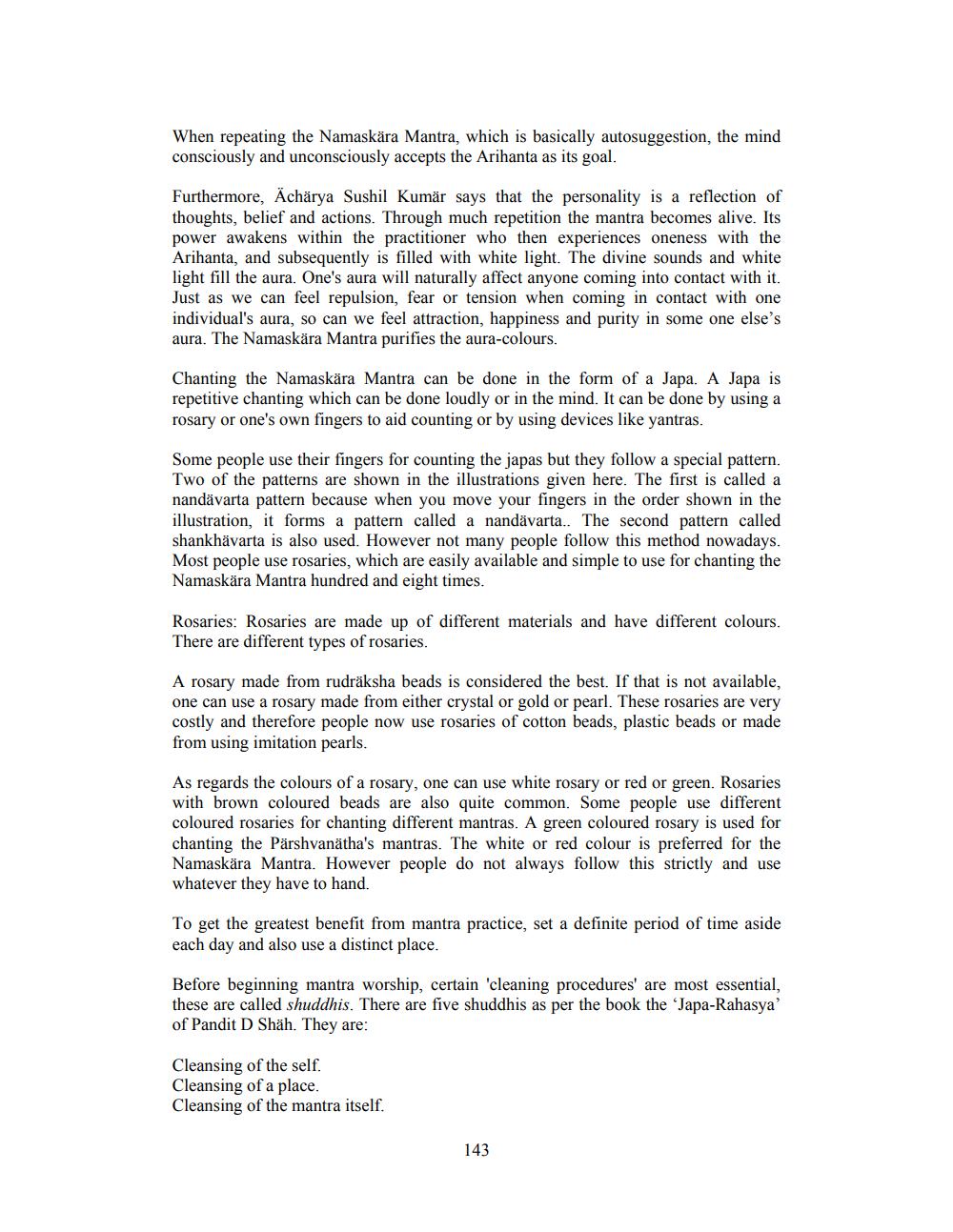________________
When repeating the Namaskära Mantra, which is basically autosuggestion, the mind consciously and unconsciously accepts the Arihanta as its goal.
Furthermore, Achärya Sushil Kumär says that the personality is a reflection of thoughts, belief and actions. Through much repetition the mantra becomes alive. Its power awakens within the practitioner who then experiences oneness with the Arihanta, and subsequently is filled with white light. The divine sounds and white light fill the aura. One's aura will naturally affect anyone coming into contact with it. Just as we can feel repulsion, fear or tension when coming in contact with one individual's aura, so can we feel attraction, happiness and purity in some one else's aura. The Namaskära Mantra purifies the aura-colours.
Chanting the Namaskära Mantra can be done in the form of a Japa. A Japa is repetitive chanting which can be done loudly or in the mind. It can be done by using a rosary or one's own fingers to aid counting or by using devices like yantras.
Some people use their fingers for counting the japas but they follow a special pattern. Two of the patterns are shown in the illustrations given here. The first is called a nandävarta pattern because when you move your fingers in the order shown in the illustration, it forms a pattern called a nandävarta.. The second pattern called shankhävarta is also used. However not many people follow this method nowadays. Most people use rosaries, which are easily available and simple to use for chanting the Namaskära Mantra hundred and eight times.
Rosaries: Rosaries are made up of different materials and have different colours. There are different types of rosaries.
A rosary made from rudräksha beads is considered the best. If that is not available, one can use a rosary made from either crystal or gold or pearl. These rosaries are very costly and therefore people now use rosaries of cotton beads, plastic beads or made from using imitation pearls.
As regards the colours of a rosary, one can use white rosary or red or green. Rosaries with brown coloured beads are also quite common. Some people use different coloured rosaries for chanting different mantras. A green coloured rosary is used for chanting the Pärshvanatha's mantras. The white or red colour is preferred for the Namaskära Mantra. However people do not always follow this strictly and use whatever they have to hand.
To get the greatest benefit from mantra practice, set a definite period of time aside each day and also use a distinct place.
Before beginning mantra worship, certain 'cleaning procedures' are most essential. these are called shuddhis. There are five shuddhis as per the book the Japa-Rahasya' of Pandit D Shäh. They are:
Cleansing of the self. Cleansing of a place. Cleansing of the mantra itself.
143




